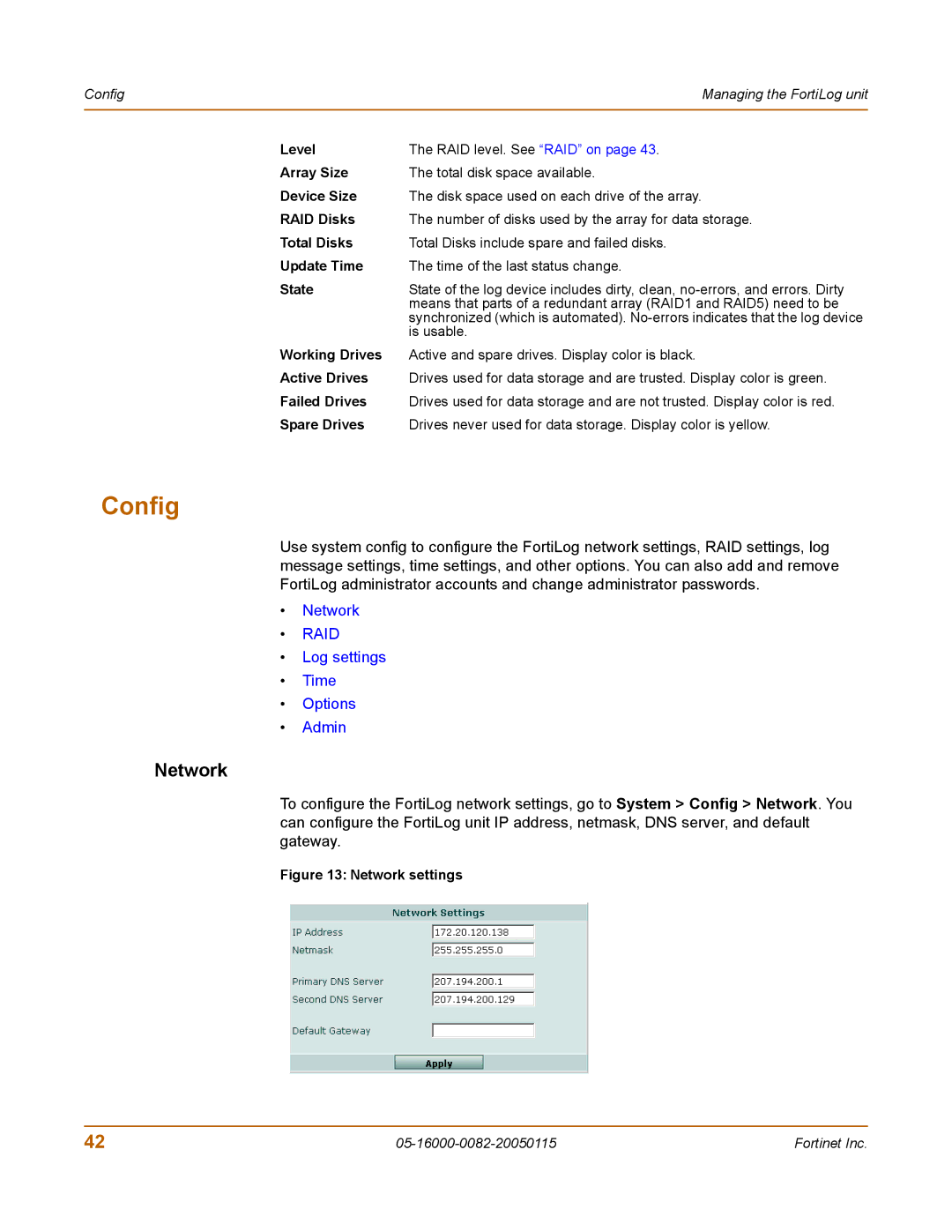
Config | Managing the FortiLog unit |
|
|
Level | The RAID level. See “RAID” on page 43. |
Array Size | The total disk space available. |
Device Size | The disk space used on each drive of the array. |
RAID Disks | The number of disks used by the array for data storage. |
Total Disks | Total Disks include spare and failed disks. |
Update Time | The time of the last status change. |
State | State of the log device includes dirty, clean, |
| means that parts of a redundant array (RAID1 and RAID5) need to be |
| synchronized (which is automated). |
| is usable. |
Working Drives | Active and spare drives. Display color is black. |
Active Drives | Drives used for data storage and are trusted. Display color is green. |
Failed Drives | Drives used for data storage and are not trusted. Display color is red. |
Spare Drives | Drives never used for data storage. Display color is yellow. |
Config
Use system config to configure the FortiLog network settings, RAID settings, log message settings, time settings, and other options. You can also add and remove FortiLog administrator accounts and change administrator passwords.
•Network
•RAID
•Log settings
•Time
•Options
•Admin
Network
To configure the FortiLog network settings, go to System > Config > Network. You can configure the FortiLog unit IP address, netmask, DNS server, and default gateway.
Figure 13: Network settings
42 | Fortinet Inc. |
